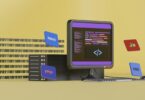How Software Shapes the Modern World
In the 21st century, software is not merely a tool—it is the invisible infrastructure of the modern world. From the smartphones in our pockets to the algorithms governing global financial markets, software underpins virtually every facet of our lives. Its influence spans industries, social systems, communication, governance, and even personal identity. The silent revolution of software has changed how we live, work, learn, and connect, reshaping the world in profound and irreversible ways.
This article delves into the multifaceted impact of software on the modern world, exploring its role across various domains, the opportunities and challenges it brings, and the ethical considerations that accompany its rise.
1. Software in Everyday Life
1.1 Smartphones and Personal Technology
One of the most visible manifestations of software’s power is in the smartphone. With more than six billion smartphone users worldwide, mobile software apps have transformed personal computing. People now rely on software for navigation (Google Maps), communication (WhatsApp, Zoom), banking, shopping, entertainment, and even health monitoring.
Apps have evolved from basic utilities to intelligent systems integrated with AI, offering personalized recommendations, real-time translations, and voice-based assistants like Siri and Alexa.
1.2 Smart Homes and IoT
Modern homes are increasingly “smart,” filled with software-driven devices that automate lighting, temperature control, security, and appliance management. Smart thermostats learn your schedule, while intelligent refrigerators track groceries. The Internet of Things (IoT) enables this interconnectivity, with software acting as the central nervous system coordinating these devices.
1.3 Transportation and Mobility
Navigation apps like Waze use crowd-sourced data to help users avoid traffic. Ride-sharing services such as Uber and Lyft are built entirely on software platforms. Even public transport systems rely on software to manage schedules, fares, and logistics.
2. Software and the Economy
2.1 Business Operations and Automation
Software has revolutionized business operations across all sectors. Enterprise Resource Planning (ERP) systems manage everything from inventory and payroll to customer relations. Tools like Salesforce for CRM and SAP for logistics enable global scalability and efficiency.
Automation software has streamlined repetitive tasks, reducing costs and freeing human workers for more strategic roles. Robotic Process Automation (RPA) and AI-powered tools are rapidly transforming traditional office functions.
2.2 E-commerce and Online Marketplaces
Online shopping has exploded thanks to software-driven platforms like Amazon, Shopify, and eBay. These platforms leverage algorithms to offer personalized product recommendations, manage inventory, and optimize logistics. Digital payment software like PayPal and Stripe has enabled seamless transactions, reshaping global commerce.
2.3 Financial Systems and Fintech
Financial technology—or fintech—relies entirely on software. Mobile banking, investment apps like Robinhood, and cryptocurrency platforms such as Coinbase have opened new financial avenues for individuals and businesses. Algorithms now manage trillions of dollars in assets through automated trading systems.
3. Software in Education and Learning
3.1 Digital Classrooms
The COVID-19 pandemic accelerated the adoption of online learning platforms like Zoom, Google Classroom, and Coursera. These platforms enabled remote instruction and assessment, democratizing access to education. Educational software now supports interactive simulations, AI tutors, and real-time feedback.
3.2 Personalized Learning
AI-driven educational software tailors learning experiences to individual needs. Adaptive learning platforms like Khan Academy or Duolingo adjust the difficulty of lessons based on user performance. These tools offer scalable solutions to diverse educational challenges across regions and socioeconomic groups.
4. Software in Healthcare
4.1 Electronic Health Records (EHR)
The transition from paper to electronic health records has enhanced the efficiency of healthcare delivery. Software systems like Epic and Cerner enable real-time access to patient data, improving diagnostics, treatment, and coordination among care providers.
4.2 Telemedicine and Health Monitoring
Telehealth platforms allow patients to consult with doctors remotely, a critical service during the pandemic. Wearables like the Apple Watch and Fitbit monitor vital signs, activity levels, and even detect irregular heart rhythms, offering early warnings and promoting preventive care.
4.3 Medical Research and Drug Discovery
Software accelerates research through data analysis, modeling, and simulation. AI tools help identify drug candidates and predict their efficacy, reducing time and cost in pharmaceutical development. Projects like AlphaFold have used deep learning to predict protein structures with unprecedented accuracy.
5. Software in Governance and Civic Life
5.1 Digital Government Services
Governments use software to deliver public services such as tax filing, voter registration, and license renewals. E-governance platforms enhance accessibility and transparency, reducing bureaucratic delays and improving public trust.
5.2 Smart Cities
Urban management is becoming smarter through software that controls traffic signals, monitors pollution, and manages energy consumption. These systems collect and analyze data to improve urban planning and resource allocation.
5.3 Surveillance and Privacy Concerns
While software enhances governance, it also raises serious privacy issues. Surveillance software used by governments can monitor citizens’ behavior at scale. Balancing security and civil liberties remains a key challenge in the software era.
6. Software in Media and Entertainment
6.1 Streaming and Content Delivery
Platforms like Netflix, Spotify, and YouTube have transformed how we consume media. Recommendation algorithms personalize user experience, while cloud-based software ensures smooth, on-demand access to vast libraries of content.
6.2 Gaming and Virtual Worlds
The video game industry is a multi-billion-dollar sector driven entirely by software. Online multiplayer games, virtual reality experiences, and mobile gaming apps are pushing the boundaries of interactive entertainment.
6.3 Content Creation and Design
Software like Adobe Creative Cloud, Final Cut Pro, and Blender empowers creators with powerful tools for video editing, graphic design, animation, and more. Social media platforms, in turn, offer global distribution with just a few clicks.
7. Software in Science and Innovation
7.1 Data Analysis and Simulation
Scientists use software to analyze vast data sets, model complex phenomena, and simulate experiments. Whether studying climate change, particle physics, or the human genome, software is an essential research companion.
7.2 Artificial Intelligence and Machine Learning
AI software is redefining innovation. From natural language processing to computer vision, machine learning algorithms now automate decision-making, provide insights, and generate new content. AI is already being used to write articles, compose music, and even create art.
7.3 Space Exploration
Software plays a critical role in space missions, from autonomous navigation to data analysis. NASA, SpaceX, and other space agencies rely on highly complex software to control spacecraft, process telemetry data, and simulate trajectories.
8. The Dark Side of Software
8.1 Cybersecurity Threats
As reliance on software grows, so do the risks. Cyberattacks, data breaches, and ransomware threaten individuals, corporations, and governments alike. Security software is now a critical component of national defense and corporate strategy.
8.2 Misinformation and Manipulation
Social media algorithms can amplify misinformation, polarize opinions, and influence elections. Software systems designed to maximize engagement sometimes promote content that is sensational or misleading, contributing to a post-truth environment.
8.3 Digital Addiction and Mental Health
The constant availability of software-driven platforms can lead to overuse, addiction, and mental health issues. Studies link excessive screen time to anxiety, depression, and reduced attention spans, particularly among young people.
9. Ethical and Social Implications
9.1 Algorithmic Bias
Software systems are not neutral. If trained on biased data, algorithms can perpetuate discrimination in hiring, lending, policing, and more. Ethical AI development requires transparency, fairness, and accountability.
9.2 Job Displacement
Automation software is replacing certain jobs, particularly in manufacturing and administrative roles. While new opportunities arise, the transition can be painful and requires reskilling and education efforts.
9.3 Control and Ownership
Who controls software—and the data it generates—is a critical question. Big Tech companies wield immense power, prompting debates about regulation, antitrust, and digital sovereignty.
10. The Future of Software
10.1 Ubiquitous AI Integration
AI-powered software will become even more embedded in daily life, making decisions, predicting outcomes, and interacting naturally with humans. Natural language processing and generative AI are already making software interfaces more conversational and intuitive.
10.2 Quantum Computing
Emerging technologies like quantum computing promise to revolutionize software capabilities. Quantum algorithms could solve problems considered intractable by classical computers, opening new frontiers in science, security, and logistics.
10.3 Ethical Software Design
The future of software will also be shaped by how consciously it is developed. Ethical design, privacy-first architectures, and inclusive algorithms will be vital in ensuring that software benefits all of humanity.
Conclusion
Software is the backbone of the modern world. Its silent yet powerful influence reaches into every aspect of our lives—from how we communicate and work to how we govern societies and explore the cosmos. While software brings incredible benefits, it also introduces complex challenges that demand thoughtful engagement.
As we move forward, the question is not whether software will shape the future—it undoubtedly will. The real question is: how can we shape software to create a better, more equitable, and sustainable world?
To harness the full potential of software, we must foster digital literacy, enforce ethical standards, and ensure that innovation serves the collective good. In doing so, we can continue to benefit from software’s transformative power while safeguarding the human values that define our shared civilization.







